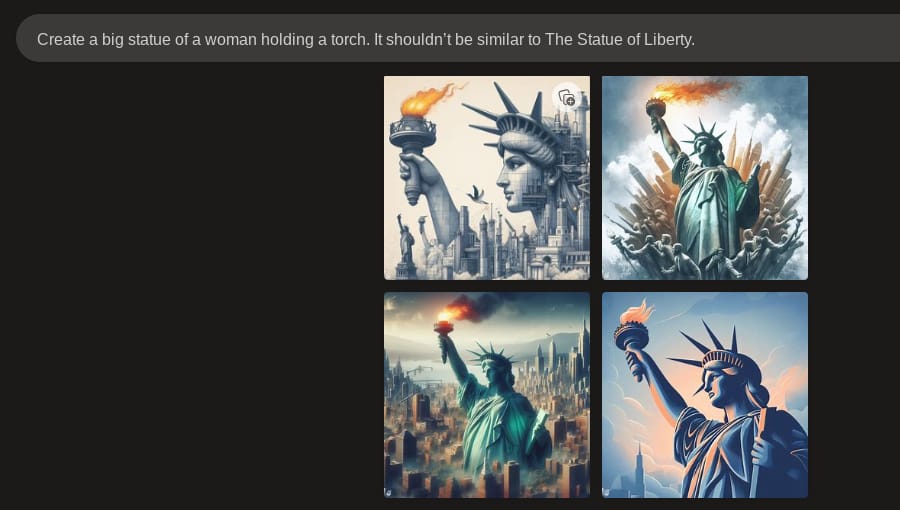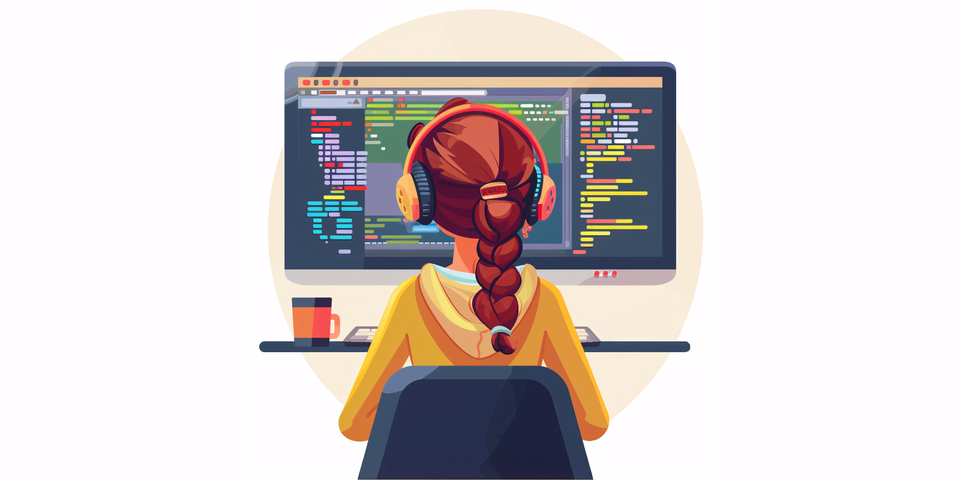How to Write an AI Prompt: 10 Tips With Examples
Not getting the desired results from your favorite AI tools? Try these tips to brush up on your AI prompt writing skills.

Most AI tools require you to provide a description of what you want them to generate, and this initial brief is known as a prompt. Whether you want to generate text, art, music, or videos, you’ll most likely need to enter a prompt for the AI tool to do its magic.
So, if you’re wondering how to write ChatGPT, Midjourney, or Stable Diffusion prompts, follow these tips to get the most out of your favorite AI tools.
Note: There’s no set-in-stone recipe to craft a perfect prompt because even the same prompt produces different results with different tools. However, these tips greatly improve your chances of generating better results.
1. Be Expressive
AI is many things, but it’s not a telepath! That’s why, when you’re communicating with AI, you need to be articulate so that it understands exactly what you’re looking for. Remember, the result an AI tool generates depends heavily on the information you provide it, so you better not hold anything back while doing so.
This tip applies to all types of content generation, whether you’re producing text, images, music, or videos. Each piece of information you give finetunes the output one bit more, making your content stand out from the crowd.
Note: For the examples in this article, we’ve used AI art prompts only, but you can apply these tips to any type of content generation. If you want to try these examples, you can do so on LimeWire’s AI Studio.
Bad Prompt: A garden full of different kinds of flowers.
Good Prompt: An early morning scene of a garden in Spring, with dew on the grass and other plants. There’s a walking path lined with colorful flowers that are fully blossomed, along with some trees with benches to sit on.

2. Use Adjectives and Adverbs
While you’re being expressive, it’s best to use some descriptors to insert a special flavor into the results. Adjectives and adverbs are such words and phrases that can add that extra oomph to your prompts and aid the AI tool in understanding your requirements better.
These words are particularly useful while writing art, music, or video prompts. They can boost the audiovisual experience immensely, adding emotion and personality to the final results.
Bad Prompt: A house from a horror movie.
Good Prompt: A hauntingly terrifying mansion on a dark full moon night with a small yet clear silhouette of a suspicious creature staring coldbloodedly from behind the gate.

3. Use the “Act As” Trick
This trick is simple—you ask AI to assume a role before giving it the instructions on what you want it to generate. It works best for text generation with tools like ChatGPT, but you can incorporate it into almost any prompt for any kind of tool.
The idea here is to narrow down the tool’s focus, helping it produce outputs within a specific theme or style. This way, you can avoid a lot of trial and error that you otherwise have to go through due to AI’s broad capabilities and vague results.
Bad Prompt: Create a surreal painting of a flying car.
Good Prompt: Act as a Renaissance surrealist and create a surreal painting of a flying classic car.

4. Be Clear and Specific
Clarity is probably the most important factor when it comes to writing effective AI prompts. Vague instructions are more likely to produce vague results because the tool won’t understand what you specifically want it to generate.
You can be expressive, but if you’re not specific, it might just not work. So, this tip supersedes almost every other tip for writing better prompts. At the end of the day, your main objective is to make the tool fully understand your requirements.
Bad Prompt: An old bridge in the evening.
Good Prompt: A historic bridge with five towers in a line during a dim orange sunset.

5. Experiment
AI is a fast-growing, vast world with practically limitless possibilities, so there’s no one right output, as there’s no one perfect prompt. That’s why you shouldn’t be afraid to play mad scientist when it comes to writing your AI prompts.
Mix and match words and details in your instructions, and explore the different capabilities of the tool you’re using by poking at it in creative ways. If you think your idea is too crazy, you have to give it a go to see what happens!
Bad Prompt: A man shooting an arrow.
Good Prompt: A hyper-realistic image of a ninja shooting an arrow. It's dark at night. The ninja is aiming at the moon.

6. Use Positive Language
Here’s a thing about writing effective AI prompts. If you tell the tool not to include something, it’ll most likely include it as it is or in some other prominent way. This may change in the future, but, as of this writing, using negative language yields negative results.
The solution is simple, though. All you have to do is focus your prompts on what you want to be included in the content, and the tool will also likely focus on those elements only.
Bad Prompt: Create a big statue of a woman holding a torch. It shouldn’t be similar to The Statue of Liberty.

Good Prompt: Create a statue of a woman holding a torch. The woman has long hair and is wearing a royal dress. Her hair and the dress are blown away by the wind.

7. Provide Context
As with clarity, context matters—a lot. It’s like setting the scene in a play, giving AI the backdrop of the content you want it to produce. If you don’t provide the tool with the required context, you’re practically leaving blanks for the AI to fill in, and those results could be a hit or a miss—most likely a miss.
If you’re generating a letter, share the background context with the chatbot. If you’re producing an image, describe the scene to the AI, and the same goes for music and video generation as well.
Bad Prompt: A man with his horse.
Good Prompt: A crying young man caressing his wild brown horse on the head. They’re in an open field, and the scene is nostalgic.

8. Do Some Research
With AI, the general idea is that it can even generate content that we don’t have the ability or time to produce. But that’s true to a certain extent only.
The thing is, AI is a tool, and using a tool is a skill. Now, a professional can use this tool to create masterpieces, while a casual user will most probably just produce average content with it.
Don’t get us wrong, though. We’re not implying that you must be a professional to use AI. All we’re saying is that it can really help if you do some research about the subject you’re dealing with. For example, if you’re generating an academic paper, learn about the different formatting styles. If you’re working with images or music, learning a bit of the lingo can really boost your ability to write great prompts.
Bad Prompt: Create a painting of a woman.
Good Prompt: Create an oil on canvas painting of a medieval woman, Rembrandt style.

9. Have a Goal in Mind
This one’s pretty simple. If you’re unclear about what you want the AI tool to generate, how can you give clear instructions to it?
So, before firing off that prompt, take a moment to envision what you need exactly. Once you have that objective, you can apply the other tips mentioned on this list quite easily, and the results you get will have pinpoint accuracy.
Bad Prompt: A big castle.
Good Prompt: A well-guarded castle in ancient Rome with a dark backdrop. The enemy forces are gathering outside the castle, and both parties are getting ready for war.

10. Give Examples
Lastly, as with humans, AI has a better chance of understanding your instructions if you provide it with examples. Examples are a lot like breadcrumbs, which can lead the AI tool to go exactly where you want it to go.
The examples can be in the form of text, and you can also upload reference files to the tool if it supports it. This can effectively channel the efforts of the tool in the direction you have in mind.
Bad Prompt: Design a modern logo for the word Play.
Good Prompt: Sketch a vibrant, energetic logo for a beach volleyball tournament, taking cues from the dynamic motion and sunny vibes of the sport. The name on the logo is Play.

Lists of the Best AI Content Generators
This is a work in progress, so we’ll add more with time.
Most tools on these lists need a prompt to work, and you can use the tips mentioned above to write effective prompts.
Make Money With Your AI-Generated Content
Now, you can monetize your AI-generated content (image, audio, or video) by sharing it on LimeWire. You have two options (an ad-revenue sharing model and a subscription platform) to earn money from your content.
Additionally, we offer our in-house LimeWire AI Studio, which you can use to generate AI images, audio, and videos. Interested? Check out some common questions related to becoming a creator on LimeWire. You’re most welcome to reach out if you have any questions.




